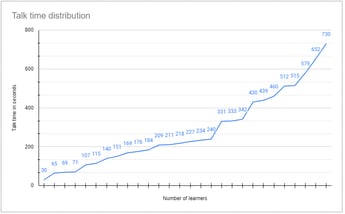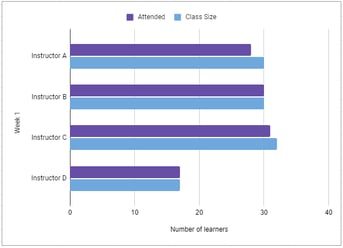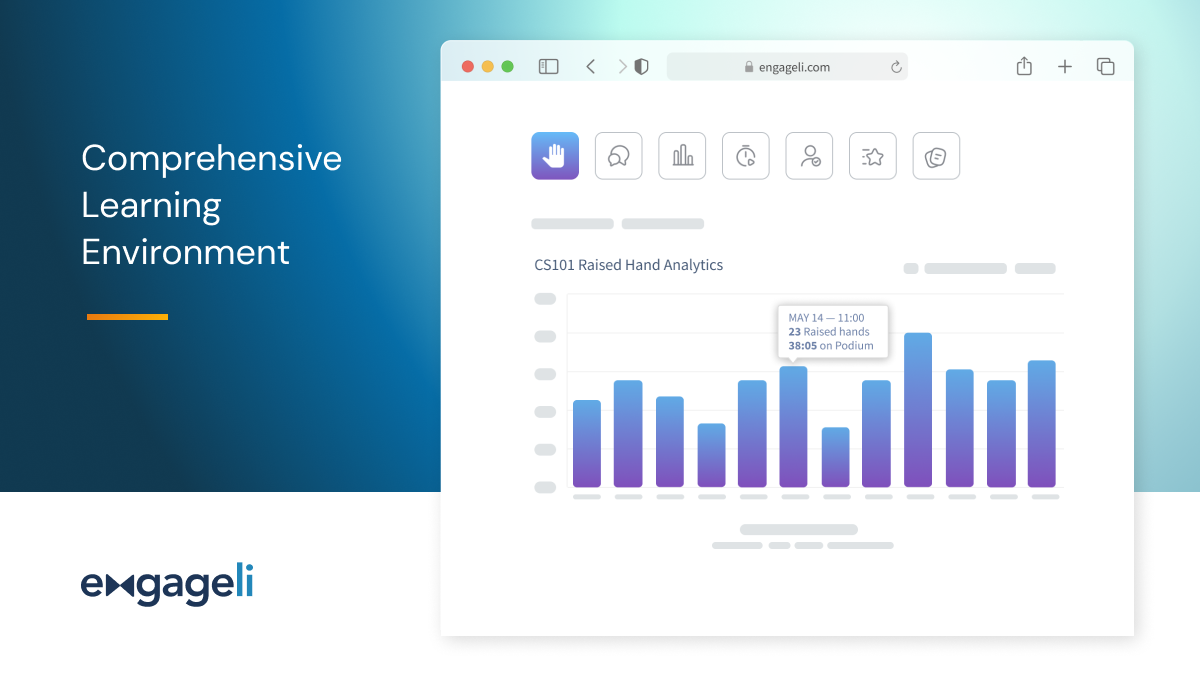Engageli is led by a team of experienced educators, entrepreneurs, and technologists working to transform higher education by giving faculty and learners an accessible and flexible platform that aims to improve learner outcomes through in-person, remote, and hybrid learning.
In this two-part series, Anita Chawla, Managing Director, Partner Strategy and Success - North America, a seasoned academic administrator turned edtech expert, explains why Engageli’s purpose-built platform and plug-and-play model benefits partners, along with the deep insights institutions can gain from Engageli’s analytics.
Based on active learning principles, one of Engageli’s most unique features is its virtual tables, with learners clustered together in smaller groups of up to 10, promoting peer-to-peer learning and meaningful discussion. While seated at a table, learners can converse among themselves, but never leave the greater classroom and can always communicate with the instructor(s). This closely mirrors the way traditional classrooms handle grouping, with small segments of a class collaborating but always within earshot of the instructor, who is able to walk around the class and provide feedback to each group. Tables also provide an environment for learners needing extra support to be paired with other learners or assistants without disrupting the classroom and while encouraging engagement and participation.
Learner Engagement and Analytics
The wide adoption of digital tools presents an unprecedented opportunity to use analytics to improve learning, both individually and at the class level, through meaningful, noninvasive, real-time engagement data. Institutions can gain a greater understanding of learner interactions with the instructor, content, and each other and promote meaningful learning experiences.
Engageli’s plug-and-play model delivers engaging table-based virtual classrooms that seamlessly integrate into an institution’s Learning Management System (LMS). The benefits of integration are not only to simplify classroom management but to provide a continuous view of learner data. This single data view can be harnessed for triggering success coaching functions, predicting learner outcomes, and informing academic initiatives based on learner analytics.
Engagement data is exposed via APIs for trends and triggering of critical learner functions of retention and completion. The engagement data allows institutions to have a meaningful impact on learner outcomes and leads strategies and informs insights. Lightweight industry-standard integrations allow for seamless learner experiences across systems at the institution and mitigate operational hours of staff time.
One of our partners is modeling playback room recording attendance to determine engagement scores and assess impact on learner outcomes. If the learner missed two sessions in a row, either in the live session or the playback room, an instructor or success coach reaches out to the learner directly to check-in. The success coach function is critical for retention and to enable personalized guidance and support to the learner. Engageli data can power insights and actions for institution’s learner services.
Data Insights
The raw data captured can be transformed with rules that align with the institution's mission and needs. For example, having an orientation recording prior to the first day of class can provide insights into potential melt. Another valuable measure is the talk time distribution in a class that can give a gauge on participation equity in the classroom, or async or live attendance to indicate effects on assignment on-time completion. Data can provide learnings around learner participation patterns, showing some learners like to raise their hands and talk in front of the class, while some learners are more comfortable collaborating with their peers at their tables or through chat.


Learner talk time is measured, as well as the activity and inclusivity in the communication channels that are built into the platform. Learners' messages to tablemates, the class, instructors, Teaching Assistants, and staff, as well as questions posted and answered, can be evaluated to determine learner participation. We can also look at disruptive data sets that inform the heat map of a classroom. For example, tracking when learners join tables and walk around the classroom and how engagement is impacted.
The insights from engagement data of virtual class delivery are the next paradigm shift post the pandemic. Our mission at Engageli is to help enable a new way of delivery and learning, and accelerate the institution's ability to power the transformation.
Want to see how Engageli can transform your academic institution? Reach out to learn more.

